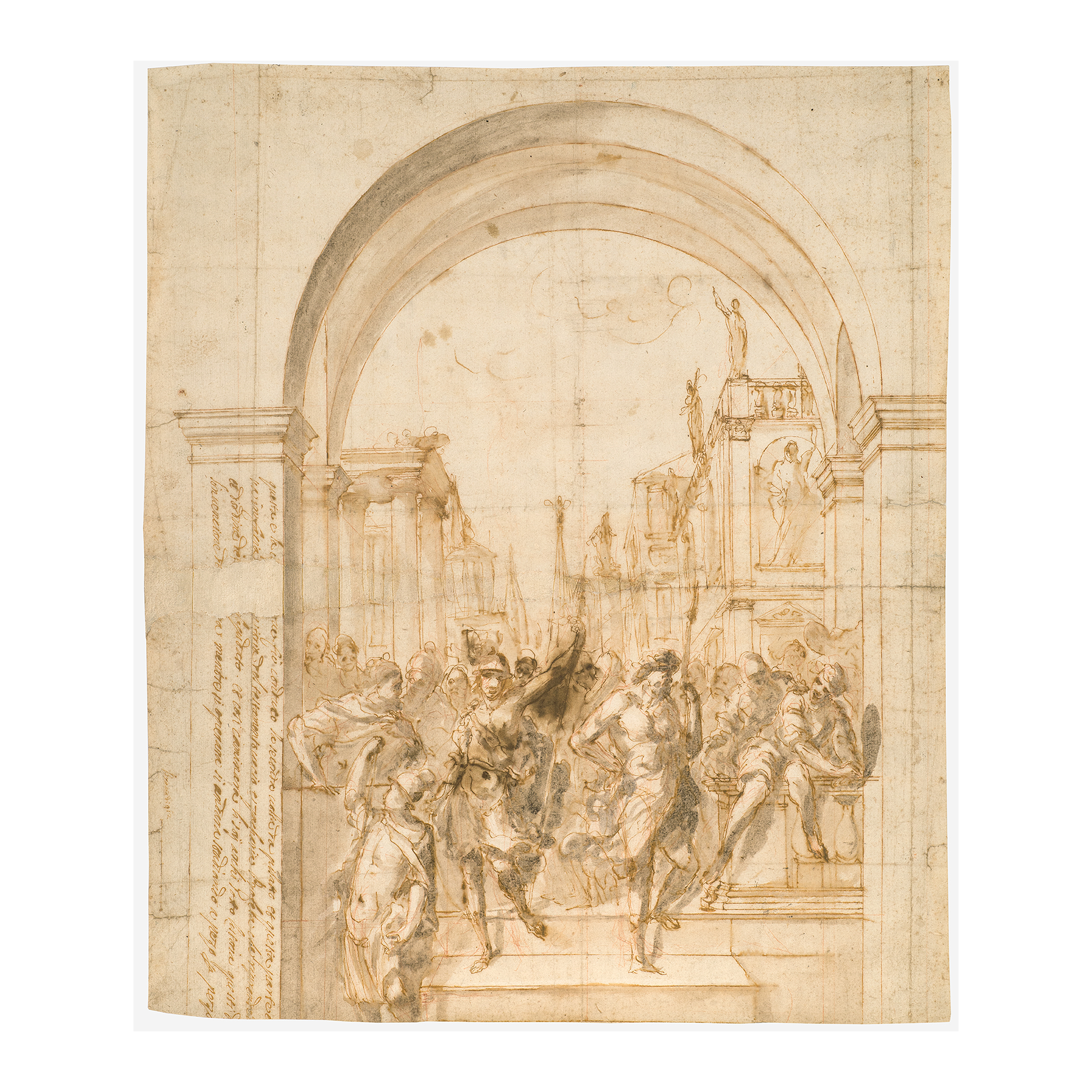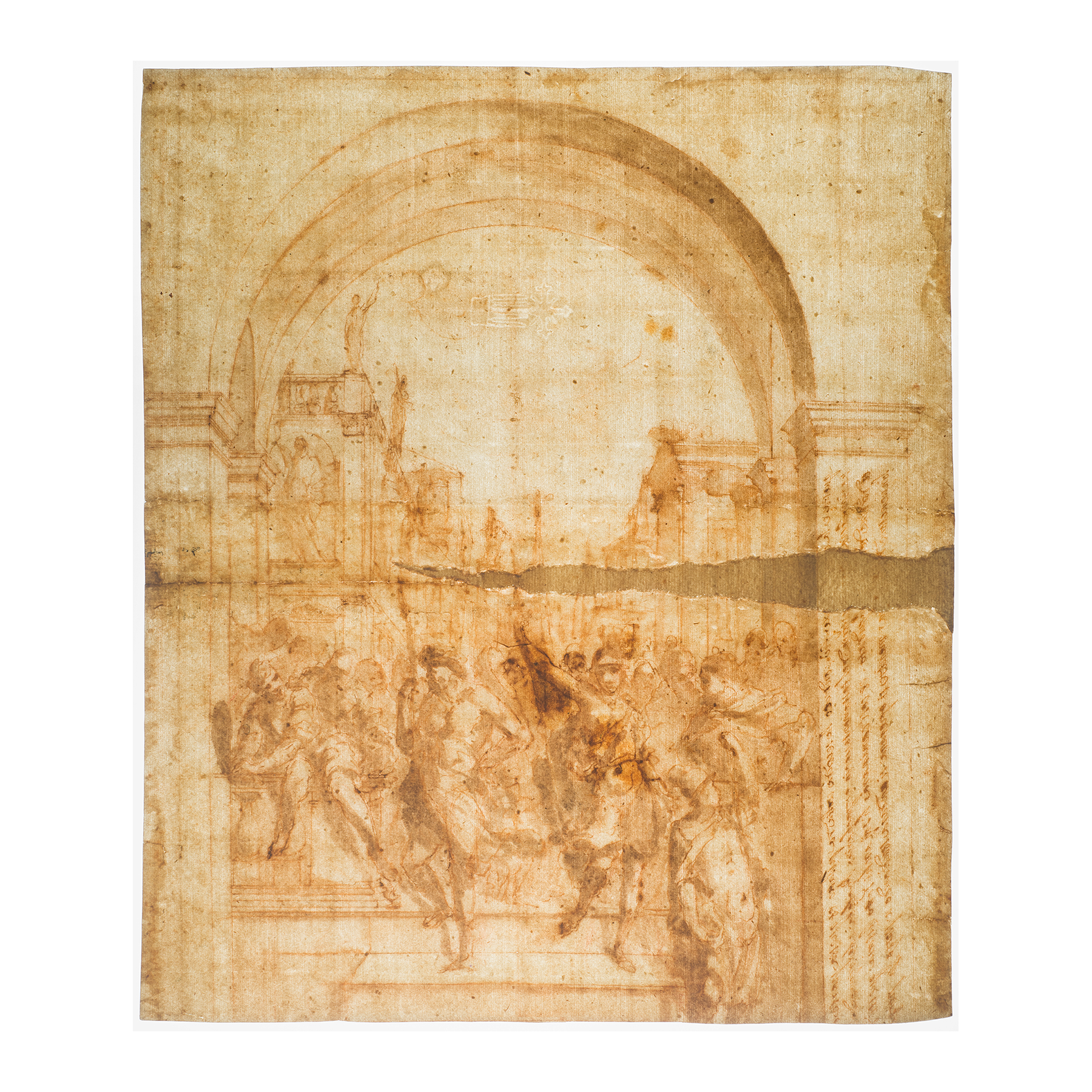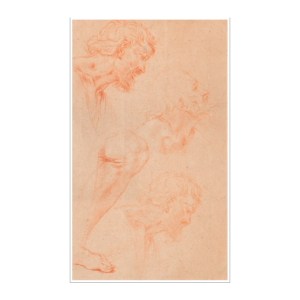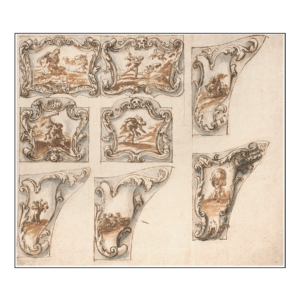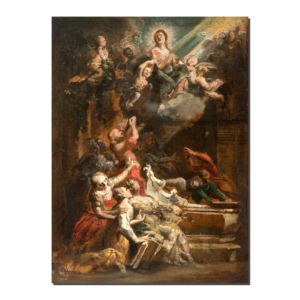Italian School
17th century
Ecce Homo or The Christ Presented to the People
Red chalk, pen and brown ink, grey wash.
Watermark: crosslet on a hand.
Inscribed questa e la […] fu conduto la seconde volta da pilatto et questa partese (?)/ na in facia […] dal testamenta vecio e zaccaria profeta che riprend../ e dordine […] lapidato. Et cosi caminara li soÿ anchi sotto historia questi/ l’invencione […] mentre si operara si andavia studiando a pezo a pezo et à côté Braccia ?
483 x 405 mm – 19 1/64 x 15 15/16 in.
In the Bible, Christ is shown twice to the people. The first time, he appears after his flagellation, wearing the purple robe and a crown of thorns. Poncius Pilatus finds no fault in him and then presents him to the crowd with the famous world: “Ecce homo”. The people nevertheless request his crucifixion because of his sinful claiming to be the “son of God”. Pilate then returns in the judgment hall, talks with Jesus and finding still no motives to condemn him brings him back in front of the crowd, saying: “Behold your King”. The people then answer: “We have no king but Caesar.” Jesus is then taken away to be crucified.
The incomplete inscription on the side seems to indicate that this drawing represents the second presentation of Jesus to the crowd. Standing in front of the viewer, under an arched portico, Christ is holding a lash and wearing a robe and the crown of thorns. However, his unexpected attitude blurs the comprehension of the subject: the right hand on his hip, one foot laid on a higher step than the other, he seems assured and proud when he should be represented hold by soldiers, hands tied, head down in an attitude of humiliation and pain.
Frontal views of one or the other of these two episodes, with temples and sculptures in the background, are quite rare. The composition recalls models from Venice or the Veneto, such as an altar in the church of San Nazaro in Verona by Orland Flacco (1527/30-1592/93) for instance, which presents a similar composition: arched top, balustrades on each side and architectural decor on the background. Only the figures’ attitudes and expressions are quite different.
The author of this unusual drawing remains to be identified.
Condition report: tears on the right and left edges; compensation on the center, the sheet pasted on Japan paper.

